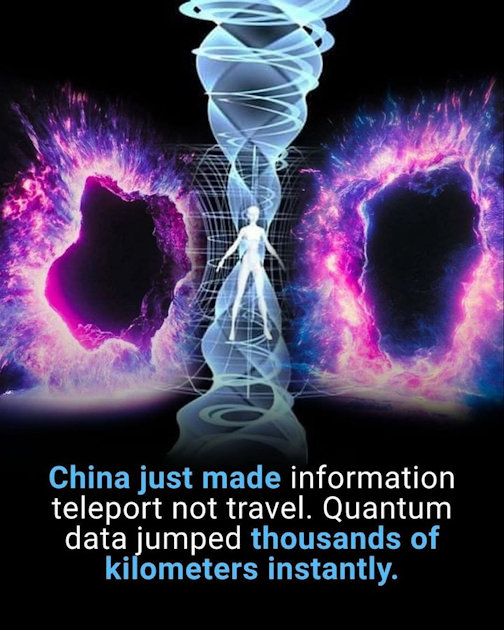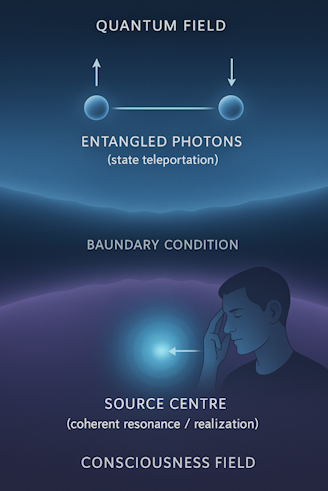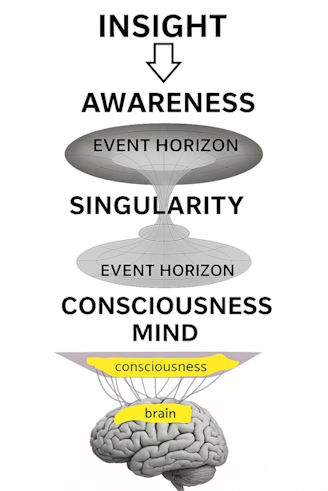
When Chinese researchers announced they had achieved quantum teleportation of information across fibre networks stretching thousands of kilometres, the scientific world paused. Quantum data had leapt between points in space without moving through it — a feat Einstein once called “spooky action at a distance.”
Credit: University of Science and Technology of China | Nature Photonics | MIT Technology Review.
We began our enquiry from this moment — a scientific milestone that seemed to bend not only our understanding of physics but also of consciousness itself. The experiment showed that information could appear elsewhere instantly, without traversing the space between. No signal, no carrier, no time delay. And yet, something profoundly real occurred: two particles, light-years apart in potential, responded as one.
In the language of physics, the entangled particles are not separate at all. They are expressions of a single, continuous wave function.
The Two Reflections of Reality
For entanglement to exist, there must be two matching states — one in the creator field (quantum space) and one in the created field (spacetime). The quantum field holds the pattern in potential, while spacetime manifests that pattern in tangible form. These twin reflections allow coherence to arise across the boundary condition: the proton or particle in spacetime mirrors its counterpart in the quantum field. Entanglement, then, is not a signal but a perfect symmetry that unites both sides of creation — the unseen and the seen, the potential and the realised. This same principle explains how insight arises within us, as the inner realisation mirrors the outer manifestation through the singularity.

In this way, what physics calls coherence becomes, in consciousness, understanding. The bridge is the same — a union between two matching realities. The outer and the inner, the particle and the thought, meet at the zero point, where distance dissolves and knowing becomes instantaneous.
Now, if we shift the lens inward, we find a mirror. What if insight — those flashes of sudden knowing — arise through the same principle? In the diagram of mind and singularity, awareness operates like a boundary condition, the human equivalent of a quantum field. At the still centre of the mind, beyond the chatter of thought, coherence forms. The brain does not transmit or receive; it tunes itself to the universal field where knowing already exists. Insight appears instantly, as if teleported from a non-local source.

This is not mystical speculation alone. Rupert Sheldrake once proposed the idea of a morphogenetic field within spacetime — a collective memory of forms, behaviours, and understandings. Each living system, he said, draws from and contributes to this field through resonance. In light of quantum discoveries, Sheldrake’s intuition finds a new context: the morphic field may be the biological manifestation of the same non-local coherence that underlies entanglement.

The singularity within us — what we call the centre source — acts as a point of contact with this field. When the mind becomes silent, it aligns with the singularity, and communication shifts from data transfer to field tuning. Knowledge does not travel; it emerges whole. This is living off the centre source, where awareness synchronises directly with the intelligence of the universe.
Imagine education, communication, and creativity in such a framework. Instead of transmitting information through language and time, we would learn by resonance — each mind becoming a coherent node in a planetary field of understanding. Just as entangled photons leap across space without travel, ideas, insight, and comprehension would arise instantaneously within an interconnected human network.
If I told you now that the future internet would not run only through cables and code but through us, would you believe it? Perhaps not — yet when the technology arrives, and the interface is the mind itself, we may look back and say it was always inevitable. The seeds are already here: quantum entanglement showing non-local coherence, neural networks mirroring collective patterning, and human awareness learning to tune rather than transmit. In hindsight, it will seem obvious that the true infrastructure of connection was biological and conscious all along, waiting for coherence to make it visible.

Science has shown us that entanglement breaks the limits of locality. Spiritual inquiry reveals that insight does the same within consciousness. Between these two, the bridge of understanding grows luminous: the universe and the human mind are both structured to know through coherence, not through distance.
Perhaps the next evolution of communication — and of humanity — will not be built on speed, but on stillness.
In the silence between thought and field, the universe listens.
Through coherence, it speaks back as knowing.
